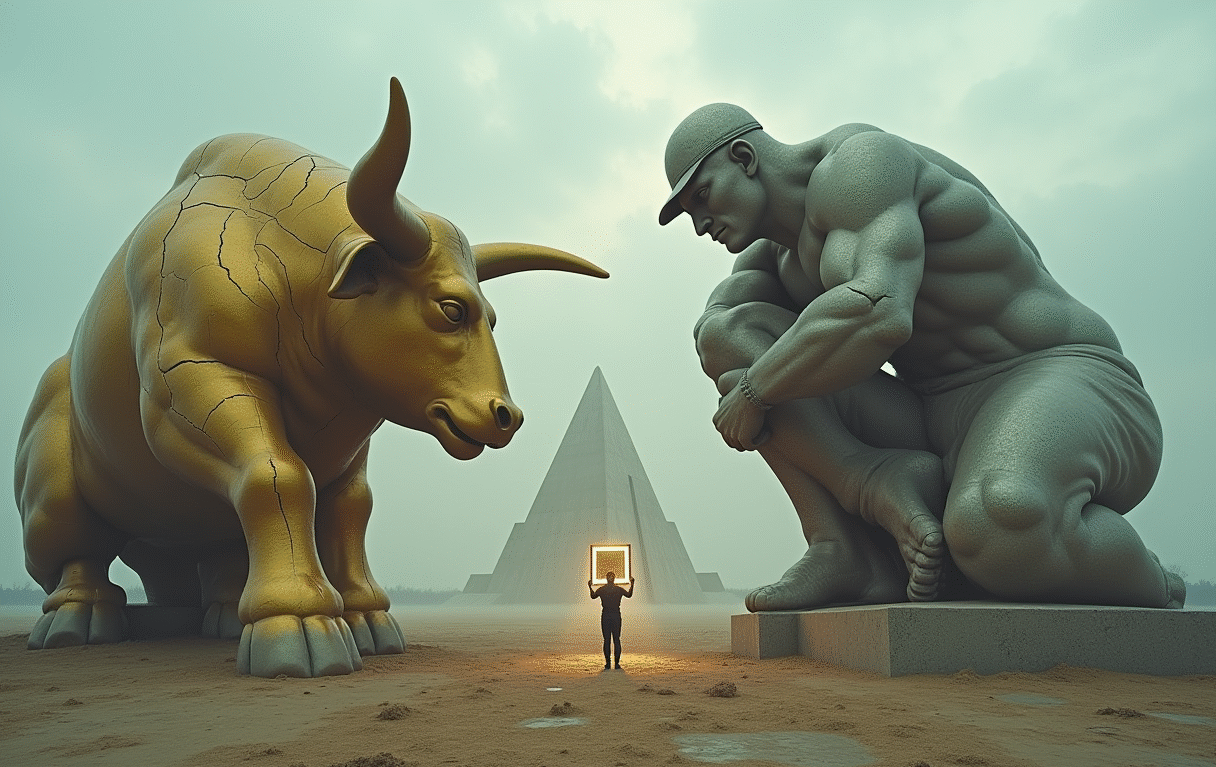Designing Without the Loop – The Structural Impasse
Humanity has tested its two dominant large-scale systems—capitalism and communism—and both have failed to deliver sustainable, just, and motivationally coherent societies. Capitalism thrives on exploitation; communism collapses under the weight of motivational suppression. The return of capitalism under neo-communist regimes proves that no system to date has escaped the gravitational pull of the recognition loop.
At the core of both systems lies a shared flaw: they are performative architectures, bound to human demands for visibility, validation, and reward. One exploits this hunger. The other denies it. Both become pathological.
This essay proposes a path forward—not a utopia, not a revolution, but a structured rethinking of how any viable future must proceed: through reconditioning the human substrate, not redesigning political machinery.
Capitalism: Exploitation by Design
Capitalism rewards ownership, not contribution. It generates productivity not by valuing labor, but by extracting surplus value from it. The longer capitalism remains “free,” the more it concentrates wealth in fewer hands. This is not a distortion of the system—it is the system working exactly as intended.
- Accumulation follows capital.
- Recognition follows accumulation.
- Status becomes currency. Visibility becomes worth.
What begins as market freedom ends in structural domination. Today, the top 10% own more than 90% of global wealth. Governments no longer govern—they manage the discontent of the governed, using distraction, subsidy, and identity politics to avoid revolt.
Communism: Suppression Without Transformation
In contrast, early communism sought to eliminate exploitation by eliminating ownership and class distinction. But in doing so, it erased the individual’s path to recognition, agency, and differentiated contribution.
What followed was:
- Mass demotivation
- Decline of innovation
- Replacement of market recognition with party recognition
The state became the only source of validation, and initiative became a threat. The result was stagnation, surveillance, and eventually collapse.
When China and Vietnam reopened to markets, productivity surged—not because capitalism is efficient, but because recognition returned. Exploitation followed.
The Recognition Loop: The Shared Root
Both capitalism and communism are trapped in the same underlying mechanism: the recognition loop. But who is caught in the loop differs.
In capitalism, it is the people—both oligarchs and consumers—who drive the system. The oligarch does not seek admiration for its own sake; he seeks power and control, and uses wealth as the primary instrument to secure recognition, influence, and dominance. The consumer, meanwhile, seeks identity and validation through patterns of consumption. The market becomes a theater of constant performance. Recognition is monetized. Ego is scaled.
In communism, the loop shifts upward. The masses are silenced, but the leaders themselves are caught. Their authority depends not on results but on ideological purity, central control, and historical myth. Recognition is monopolized. Power is sacralized. The ego becomes the state.
Both systems operate through different actors, but the same neural engine: the human need to be seen, admired, obeyed, or validated.
- Capitalism says: exploit to be seen.
- Communism says: control to be seen.
- Neo-communism says: exploit, but under our terms.
None of them dismantle the deep psychological loop. They merely redirect it. That is why every revolution decays into hierarchy. Every reform reproduces power. Every liberation hardens into a new elite.
To escape this fate, we must stop treating systemic redesign as a solution and instead begin with the human architecture beneath it. Structural reform alone is not enough.
The Roadmap: Building Outside the Loop
Phase 1 — Reconditioning the Human Substrate
No system can work if it relies on humans shaped by the old loop. We must begin with reconditioning:
- Interrupt mimetic desire
- Expose and dismantle status hunger
- Create rituals, education systems, and environments that reward coherence over performance
- Make invisibility honorable again
This isn’t ideology. It’s neurocognitive hygiene.
Phase 2 — Designing Non-Performative Structures
Once reconditioned minds exist:
- Governance must be non-personal and non-contestable
- Property must be non-transferable and use-based, not hoardable
- Economy must operate on non-scalable tokens, reciprocity, or shared access rights
- Currency should expire or lock to function, not accumulate
This will reduce speed, growth, and competitiveness—but it will increase coherence, fit, and sustainability.
Phase 3 — Let It Fail
Every prototype must break. Not behind closed doors, but in public. Failure is the only way to reveal hidden loop logic that wasn’t accounted for. Let systems implode before they spread. Reward designers who show their failures transparently, not those who perform perfection.
Phase 4 — Non-Ideological Replication
If the system spreads through visibility, it’s already corrupt. Instead:
- Let it replicate by fit, not fame
- Avoid branding
- Avoid evangelism
- Avoid speed
- Grow beneath the level of applause
Real change spreads like form, not like fashion.
Toward a Post-Performative Society
We do not need a new ideology. We need a new organism.
Until we can operate without craving recognition, every system—no matter how pure in design—will degenerate into hierarchy, manipulation, and spectacle.
This is not pessimism. It is realism. And it is liberation.
Because once we accept that no external system can save us, we can begin the real work:
- To build structures that do not need to be seen to be true.
- To live lives that do not perform to be valid.
- To abandon applause—and finally meet form.


